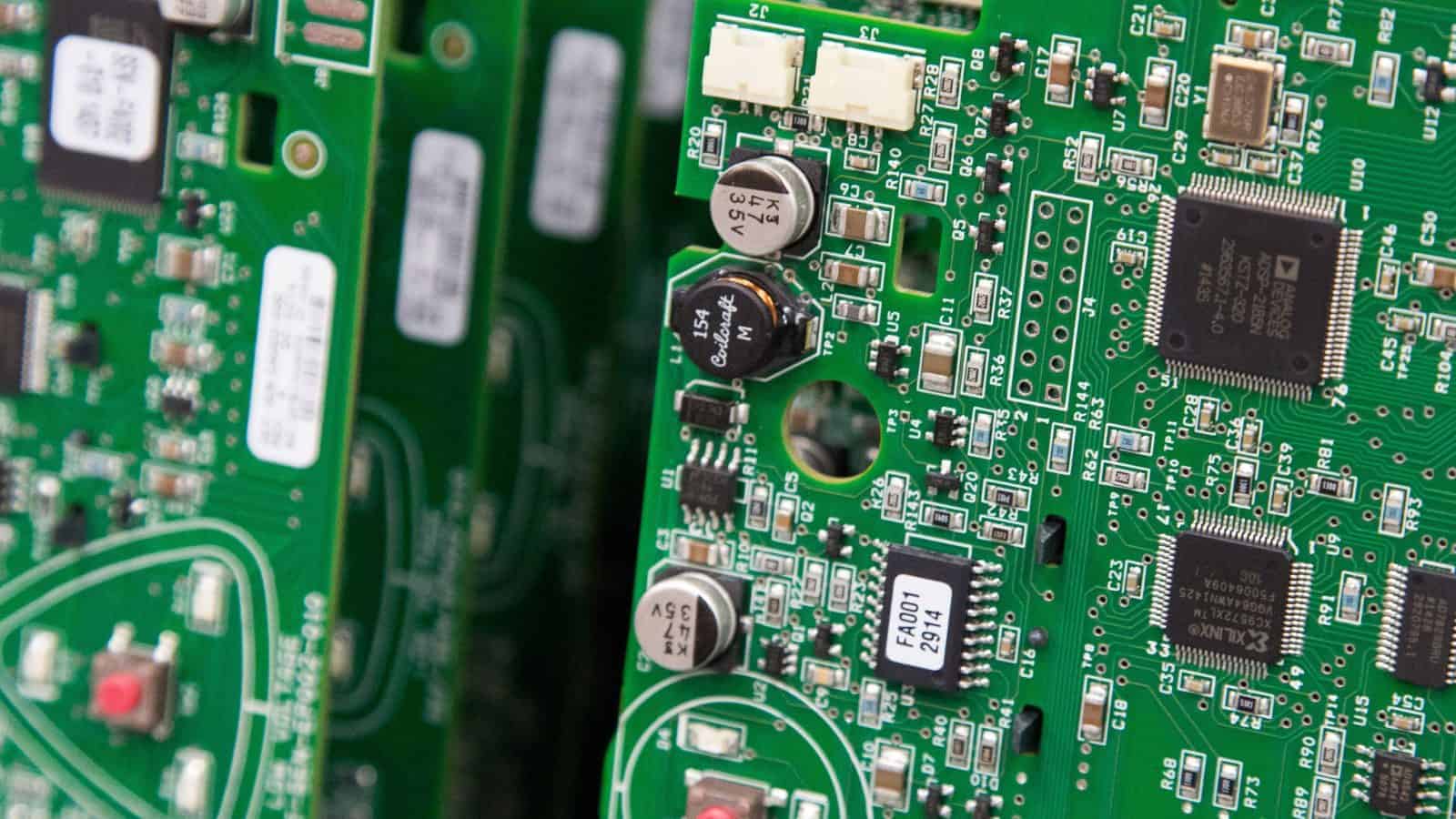Manufacturers Announce Addition of Innovation Research Interchange
Key Milestone in Vision to Be One-Stop Shop for Manufacturing
Washington, D.C. – National Association of Manufacturers President and CEO Jay Timmons today announced plans to continue the NAM’s ambitious organizational growth by combining with the Innovation Research Interchange.
The IRI is a leader in helping companies drive innovation and develop the cutting-edge technologies that keep manufacturing strong. The NAM’s growing array of services and thought leadership represents another key milestone in the vision adopted by the NAM Board of Directors to become the one-stop shop for manufacturers.
“The modern association must constantly innovate and evolve to best serve its industry, and with the addition of the Innovation Research Interchange, NAM members will have access to the widest array of expertise and services in the history of the association. With this transformational development, the NAM and our industry will benefit from world-class R&D thought leadership and the proven strategies that the IRI has perfected. The IRI will continue to support organizations in their mission to drive innovation, and it will enjoy access to the largest network of manufacturing companies and leaders,” said Timmons. “This development enhances the value proposition for NAM members and is part of our ongoing commitment to provide programming that exceeds our members’ expectations.”
IRI President Ed Bernstein will continue to lead the IRI’s day-to-day operations as vice president and executive director, reporting to NAM Chief Operating Officer Todd Boppell.
“The NAM is the perfect partner for the IRI,” said Bernstein. “Together, we will be the preeminent thought leadership organization for innovation management. We have a proud history of helping manufacturers and others lead R&D that produces lifechanging products and technologies. As part of the NAM, we will be able to equip even more industry leaders with the tools to ensure that innovation is impactful throughout the entire enterprise.”
The combination with the IRI follows the NAM’s acquisition of the Manufacturing Leadership Council in 2018. “As a member of the Manufacturing Leadership Council, I’ve seen firsthand how the MLC has been strengthened since becoming part of the NAM,” said Entegris Director of Digital Transformation and IRI Board Chairman Steven Moskowitz. “The access to even more resources and an incredible network has been invaluable—especially through the ongoing pandemic and supply chain disruptions. That’s why I believe that bringing the IRI, MLC and NAM together is the right move for everyone—IRI members, NAM members and the entire industry. The combination of the IRI, MLC and NAM will not only provide continued leadership from each individual organization for their members, but also create opportunities for new value across the entire product lifecycle, thus demonstrating the old adage that the total is greater than the sum of the parts. This positions all of us for even greater success and creates the future-facing organization we need.”
As part of the transition, IRI staff will join the NAM team. More information on the IRI can be found here.
-NAM-
The National Association of Manufacturers is the largest manufacturing association in the United States, representing small and large manufacturers in every industrial sector and in all 50 states. Manufacturing employs 12.5 million men and women, contributes $2.52 trillion to the U.S. economy annually and has the largest economic multiplier of any major sector and accounts for 58% of private-sector research and development. The NAM is the powerful voice of the manufacturing community and the leading advocate for a policy agenda that helps manufacturers compete in the global economy and create jobs across the United States. For more information about the NAM or to follow us on Twitter and Facebook, please visit www.nam.org.
-Innovation Research Interchange-
Innovation Research Interchange (formerly the Industrial Research Institute) is an inclusive membership organization with hundreds of global members in private-sector companies, federally funded laboratories, universities and others. Founded in 1938, we lead and advance the field of innovation management by creating contemporary practices. Some of the world’s most widely adopted models—such as “open innovation,” “front end of innovation” and “stage-gate”—were born from the work of our members. We value strength in cooperation and partner with other organizations at the forefront of developments in innovation management, creating a hub for all to convene and contribute in an experimental, noncompetitive and noncommercial environment. For more information, visit www.iriweb.org.
When and How Will Manufacturing Achieve Net-Zero Emissions?
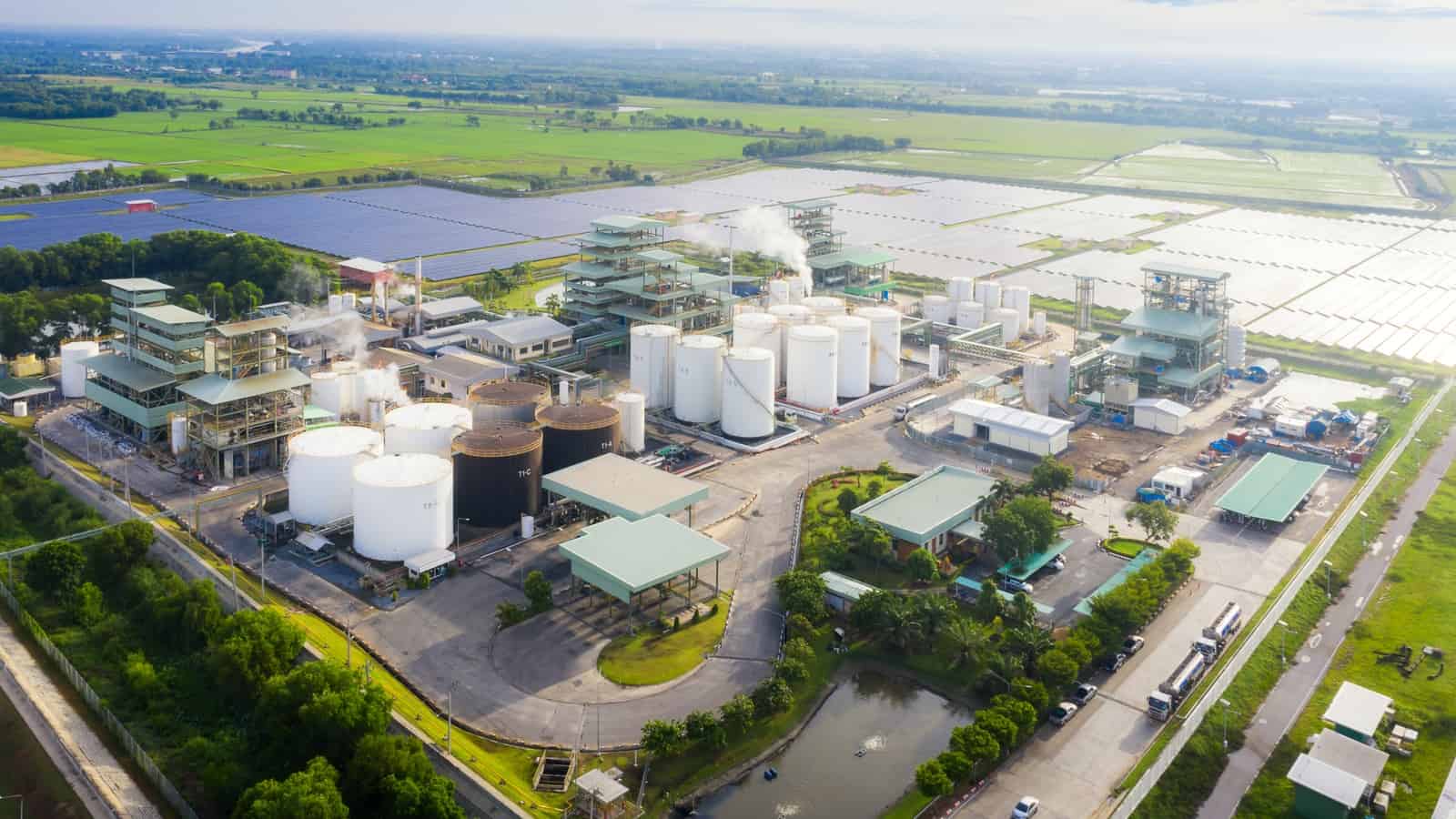
When it comes to sustainability, the question is no longer whether manufacturing needs to work to create a greener industrial future—it’s when.
To help manufacturers advance their sustainability efforts and achieve net-zero emissions by 2050, the NAM’s Manufacturing Leadership Council has dedicated the December/January issue of the Manufacturing Leadership Journal to Manufacturing 4.0 sustainability.
Key Highlights from the Latest ML Journal
- Sustainability survey: Review the results of the MLC’s latest M4.0 sustainability survey to understand manufacturing-leader sentiment about climate change. Learn how the pandemic is changing the way leaders prioritize sustainability and net-zero strategies. Plus, find out how sustainability can affect future growth and competitiveness.
- Practical examples: See what forward-thinking companies such as Procter & Gamble are doing to slash emissions and fight climate change. Also, discover M4.0 strategies and technologies to help you develop your own net-zero action plan.
- Current conversation: Understand the successes, opportunities and challenges in the race to achieve net zero by 2050. Hear from thought leaders such as MLC Co-Founder David Brousell and Lisle Corporation President Mary Lisle Landhuis.
- Potential obstacles: Learn the roadblocks to developing a sustainability program and how to overcome them. Know the challenges of adopting a circular-economy mindset and why it’s well worth having.
Why the ML Journal matters: Sustainability is just one of the exciting topics discussed in the ML Journal. Throughout the year, you’ll find case studies, interviews, technology showcases and deep insights on M4.0 from manufacturers working on the front lines. The Journal is a quick, easy way to stay current on the digital revolution—and sharpen your company’s competitive edge.
Click here to receive trial access to the entire December/January issue on M4.0 sustainability or to browse articles on a range of topics from past issues.
Global Semiconductor Shortage Leads to Backordered Gifts
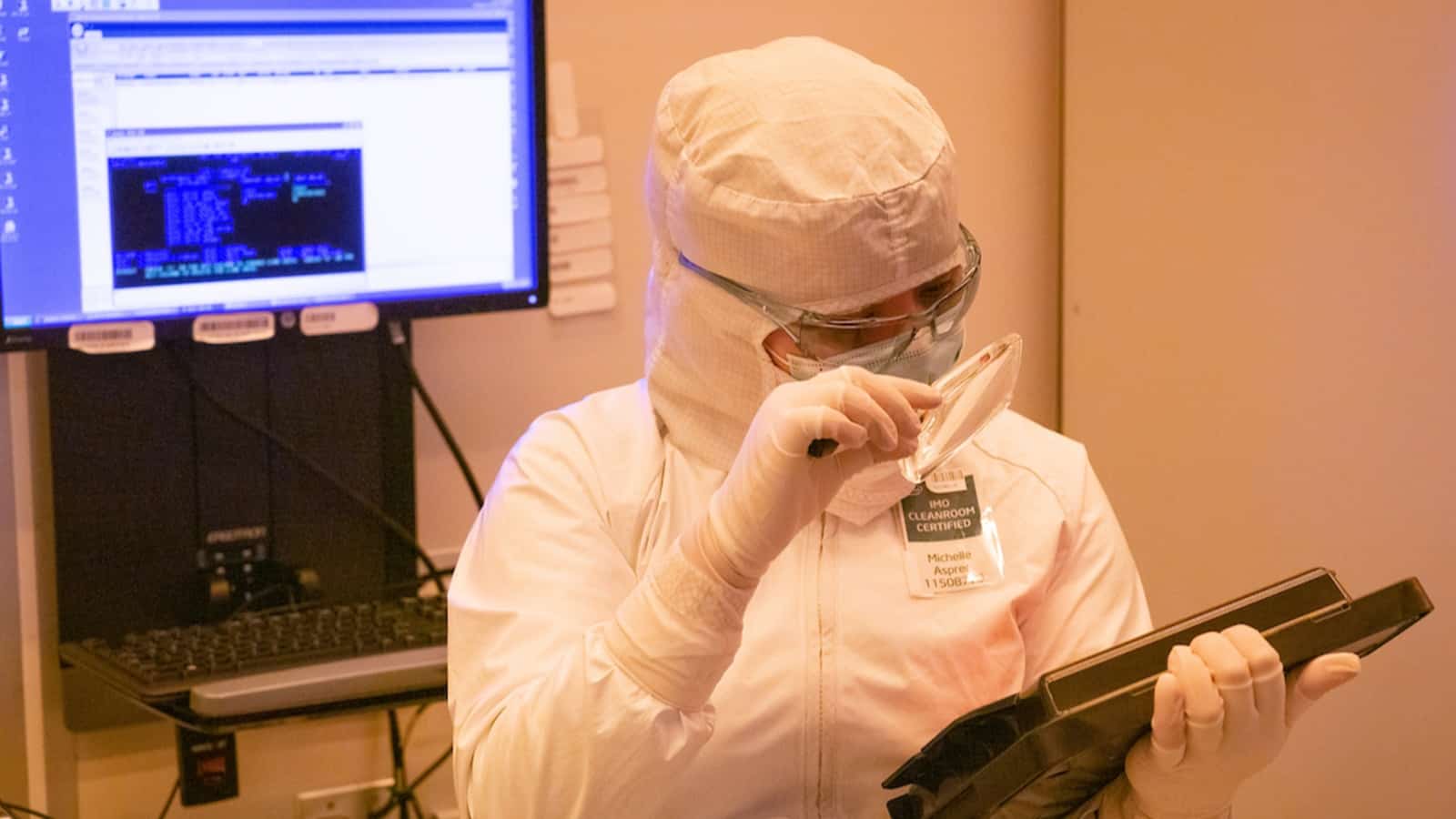
A shortage of semiconductors continues to roil manufacturers across the country. NAM Vice President of Infrastructure, Innovation and Human Resources Policy Robyn Boerstling joined us to discuss what’s going on, why it matters and what the NAM is doing to help.
What semiconductors are: Semiconductors are critical components for all types of manufactured products. Essentially, they serve as the “brains” of medical devices and electronic devices from automobiles to home appliances to personal electronics. A shortage in semiconductors creates ripples across the manufacturing industry.
What we’re seeing: Christmas is around the corner, and American consumers are discovering that some backordered products may have delivery dates up to a year away. But the chip shortage also has longer-term implications. As more technologies become essential to daily life and Manufacturing 4.0 advances in the industry, a reliable supply of semiconductors will be more important than ever. Manufacturers will need steady, secure supply chains in order to guarantee smooth production.
What we can do: For now, there’s only so much policymakers can do to speed up production. Most semiconductors are manufactured in Asia, and deliveries are being hindered by everything from COVID-19 impacts to natural disasters. According to Boerstling, the eventual goal should be to create a robust semiconductor industry in the United States so that U.S. manufacturers are less reliant on foreign supply chains.
- “This is a global crisis,” said Boerstling. “We need to be thinking about how to build resiliency in the supply chain. COVID has taught everyone the importance of manufacturing domestically and ensuring that we have the supplies we need to make products in the United States. That will require rebuilding our semiconductor manufacturing capacity through a combination of grants and incentives to make sure it’s competitive globally.”
Congress’s chance: Legislation to buttress the U.S. semiconductor industry has made it to both the House and the Senate, but differing bills have left Congress with a mismatch. The House passed a bipartisan CHIPS Act in an authorization last year, but it lacked funding. Meanwhile, the Senate passed funding through the United States Innovation and Competition Act of 2021, but the legislation hasn’t been taken up in the House. Action is urgently needed, and Congress has the tools to move forward. Now, they need to act.
NAM’s role: The NAM is deeply engaged in conversations with lawmakers in the House and Senate to help shape a way forward that supports manufacturers and delivers the help American consumers need.
- “The NAM is working with people in Congress and with manufacturers across the country to make sure lawmakers understand how important this is,” said Boerstling. “We’re looking forward to the House and Senate coming to an agreement.”
NAM Announces Promotions
Timmons: “We are ready to create the future for our industry and our country, with a focus on 2030 and beyond.”
Washington, D.C. – National Association of Manufacturers President and CEO Jay Timmons today announced an evolution of the NAM management team that will expand capabilities, leadership opportunities and innovations and strengthen manufacturing in the United States for 2030 and beyond. Amid an unprecedented pandemic, historic workforce shortages, supply chain and opportunity gap challenges, new and emerging threats to U.S. manufacturing and the country, the digital transformation and once-in-a-generation policy and legal achievements, manufacturers in the U.S. and the NAM continue to play an outsized role in creating the future for people, communities and the country.
These leadership promotions will bolster the NAM’s impact as the industry’s unified voice. They will promote, perpetuate and preserve the values that guide manufacturers’ unrivaled contributions to society and make America exceptional: free enterprise, competitiveness, individual liberty and equal opportunity.
“More than six years ago, the NAM Board of Directors put its support behind a vision to strengthen our association and make the NAM a ‘one-stop shop’ for manufacturers by expanding and diversifying the NAM’s portfolio of offerings in advocacy, operational excellence, legal action, workforce development and news and insights,” said Timmons. “The NAM’s record-breaking results in 2020 and 2021—in the face of crises many of us have never seen in our lifetimes—were a direct result of turning that vision into reality with an entire team resolutely focused on supporting manufacturers and America’s business sector every day. So, now we are putting more responsibility in the hands of this immensely talented team that has proven in the best and worst circumstances to be the strongest, most effective voice and resource for manufacturers in the United States. We are ready to create the future for our industry and our country, with a focus on 2030 and beyond.”
The NAM ends 2021 with a net membership retention rate on track to be in the top historical tier in the 126-year history of the association. Initiatives realized during the pandemic spurred tremendous growth for the association in 2020 and 2021. Those initiatives included efforts to mobilize and support manufacturers’ pandemic response and personal protective equipment production; advance vaccinations; provide greater operational insights to the industry; run momentous campaigns for policy and legal wins, notably infrastructure investment and pandemic relief; and deliver comprehensive solutions to the industry’s most pressing issues, including workforce development.
“Our capability to drive solutions for manufacturers is central to everything we do, and we are aligning this team to provide even more solutions moving forward,” said Timmons.
The following leadership promotions become effective Jan. 1:
- Erin Streeter will be named Executive Vice President of the NAM. Currently serving as Senior Vice President of Communications and Brand Strategy, Erin will work alongside the President and CEO to set the strategic direction of the association and align and integrate teams, strengthen internal and external communications and grow audiences toward that direction. She will continue to oversee all brand, communications and marketing activities but will also add public affairs and mobilization as well as advocacy campaigns to her portfolio. The integration of these critical portfolios will ensure the NAM is positioned to advance the needs and priorities of manufacturers by providing first-in-class advocacy.
- Carolyn Lee has been named President of The Manufacturing Institute by its board of directors. The workforce crisis of more than 1 million open jobs today isn’t just an existential threat to manufacturing in America; it also threatens the security of our country. To meet this moment, the MI continues to break new ground in supporting manufacturers’ efforts to recruit and retain a skilled, diverse workforce. Carolyn’s focus for 2022 will be on developing a strategic growth plan and expanding partnerships and thought leadership to carry the MI and the industry into the future.
- Carolyn has asked Keith Smith to serve as Chief Administrative Officer of the MI. In this new role, Keith will work with Carolyn and the MI team to develop and implement a new organizational growth plan and help achieve the strategic vision of the organization. As a member of the NAM Senior Staff, Keith will also continue his leadership of the Association Partnerships Division as an NAM Senior Vice President, overseeing the NAM’s membership programs with association partners at the national, state and local levels.
- In addition to her current responsibilities as NAM Chief of Staff, Alyssa Shooshan will assume leadership of NAM Board strategy. Alyssa will advance board engagement, initiatives, mobilization, partnerships and programming.
Six current NAM vice presidents will be promoted to the newly created role of managing vice president. This group will be charged with leading the NAM’s Leadership Team in creating new opportunities in advocacy, membership value/thought leadership and culture/operations. In addition to serving as counselors to the NAM President and CEO, they will work with senior staff on all issues impacting the association.
- Adria Brockman, Managing Vice President of Membership
- Jamie Hennigan, Managing Vice President of Communications and Public Affairs
- Chrys Kefalas, Managing Vice President of Brand Strategy
- Daryl Muller, Managing Vice President of Membership
- Chris Netram, Managing Vice President of Tax and Domestic Economic Policy
- Shonzia Thompson, Managing Vice President of Association Partnerships
Based on considerable input from across the association, the following team members will be promoted to vice president and named to the NAM Leadership Team, which meets quarterly to help enhance and strengthen the organization’s service to manufacturers and the country. The Leadership Team will be charged to work with the managing vice presidents in a select area of the team’s portfolio.
- Rob Damschen, Vice President of Strategic Communications
- Mark Isaacson, Vice President of Executive Communications and Chief Speechwriter
- Brian James, Vice President of Conference and Office Operations
- Mike O’Brien, Vice President of Public Affairs and Advocacy
- Chris Schmitt, Vice President of Strategic Partnerships
- Patrick Smith, Vice President of Member and Board Relations
- Megan Stewart, Vice President of National Department
In recognition of the expansive growth of the MI, the following MI vice presidents will be named to the NAM’s Leadership Team:
- Gardner Carrick, MI Vice President of Workforce Solutions
- Herb Grant, MI Vice President of Program Execution
- AJ Jorgenson, MI Vice President of Strategic Engagement and Inclusion
- David McKnight, MI Vice President of Strategic Partnerships
A new group of leadership influencers, recognized by their peers as agents of organization-wide progress, was also appointed for one-year terms to work directly with the NAM Leadership Team to provide insight and counsel on key issues that affect the strategic direction of the NAM.
- Cameron Alvarez, Art Director
- Kristie Arslan, Senior Director, Member and Board Relations
- Penny Brown, Content Director, Manufacturing Leadership Council
- Julie Chase, Senior Compliance Counsel
- Charles Crain, Senior Director, Tax and Domestic Economic Policy
- Kirk Fordham, Senior Director, Member and Board Relations
- Jeni Littlepage, Senior Manager, Benefits Administration
- Ryan Ong, Director, International Business Policy
- Cassi Zumbiel, Director, Workforce Programs and Policy, MI
-NAM-
The National Association of Manufacturers is the largest manufacturing association in the United States, representing small and large manufacturers in every industrial sector and in all 50 states. Manufacturing employs more than 12.5 million men and women, contributes $2.52 trillion to the U.S. economy annually and has the largest economic multiplier of any major sector and accounts for 58% of private-sector research and development. The NAM is the powerful voice of the manufacturing community and the leading advocate for a policy agenda that helps manufacturers compete in the global economy and create jobs across the United States. For more information about the NAM or to follow us on Twitter and Facebook, please visit www.nam.org.
9 Key Considerations for Digital Twins in Manufacturing

Many manufacturers are ahead of the curve when it comes to digital 4.0, but not all may know about the numerous potential benefits of digital twins. A virtual replica of a physical product, asset or system, a digital twin makes the physical computable. It offers manufacturers a range of advantages, including better business visibility, increased product reliability and new revenue streams.
Is digital twinning right for your business? Below are some key considerations to weigh as you think about adopting this advanced manufacturing technology.
- Digital twins are not complete representations of a product.
Digital twins are akin to algorithms. They are highly reliant on data input, and since it’s nearly impossible to turn every aspect of a physical product into data, digital twins are not precisely twins, though they are pretty close. A digital twin is created by outfitting a product with sensors that can track functionality. These can then be used to study simulations of the product’s performance. So digital twins are made up of models and data, but their complexity is reliant on the data used to create them. - Digital twins evolve over time.
As a product moves through its lifecycle, the information in its digital twin will shift in response to its performance, technical configurations and environmental parameters. - Information and data are key across a product’s lifecycle.
For a digital twin to remain relevant and useful over time, make sure you are utilizing a data structure that can be easily used and exchanged over different systems and applications. - You can use digital threads to enable digital twins.
Digital threads are a communication framework that link all elements of a product’s data, from design to obsolescence. Using them reduces the complexity of digital-twin implementation and increases digital twins’ accuracy. - Transparency is critical.
Identify, classify and correlate data across various sources so there’s transparency and automated information-identification processing. These are crucial for smooth digital-twin deployment. - Open format is best.
In contrast to a proprietary system, which ties an organization’s data to specific systems, limiting its use, an open format ensures that your digital twins can be easily updated, scaled and extended when new models and data representing new outcomes become available. - Your device management plan matters.
In addition to ensuring that data is in a format that can be accessed and used over time, you should make similar considerations for devices that will access that data (i.e., phones, tablets and laptops). Make sure that your device plan can keep up with your needs for monitoring, updating and security. - The cloud is your friend.
Cloud-based computing, storage, analytics and artificial intelligence/machine learning services enable operational technology and information technology managers to build, deploy and grow solutions quickly and affordably. - There are costs and benefits.
Digital twins today may be expensive to build and maintain, but they enable technical agility and speed that foster easier scaling—and save money in the long run to boot.
Learn more about digital twins: As decision-makers in manufacturing embrace digital transformation, it is imperative to consider digital twins as key pieces of the process. For more insights on digital twins in manufacturing, read Digital Twins: The Key to Unlocking Value and Innovation.
AI Roadmap: How Manufacturers Can Amplify Intelligence with Artificial Intelligence

Artificial intelligence offers manufacturers a host of benefits. These include better visibility into supply chains, insights from predictive analytics and the ability to respond to unexpected changes in demand more efficiently and quickly. Here’s a six-step roadmap for manufacturers looking to integrate AI into their business.
Six-Step AI Roadmap for Manufacturers
- Acknowledge AI’s potential
Engage the C-suite in dialogue about how best to use AI. Allocate resources for specific AI projects and set priorities across the business. Pick company AI “agents” who can create business cases, develop metrics and put AI solutions into action. - Transform and plan
Create an AI plan that includes key performance indicators in line with your business strategy. Establish a special data unit to address needs AI could help support, such as data collection and cleansing. - Build your data foundation and structure
Convert any remaining nondigital data, “clean up” other data sources so they don’t contain errors or duplicates and add structure to boost your data quality and effectiveness. - Create an external “partnership ecosystem”
If your business doesn’t have in-house AI expertise, engage outside experts such as start-ups, academic specialists and consultancies. - Leverage in-house AI expertise
Employ outside AI experts to teach other staff members about data science. Your existing workforce will need this information to learn new skills and fulfill new responsibilities. - Create architecture and infrastructure
Consider using standardized infrastructure service offerings that can slot easily into your existing business setup. This will make integration much smoother.
Why does AI matter? Manufacturers that create AI-friendly cultures today are positioning themselves to boost customer and employee satisfaction tomorrow—and they’re gaining a competitive edge to boot.
How BASF Uses Enhanced Reality to Help Workers Learn
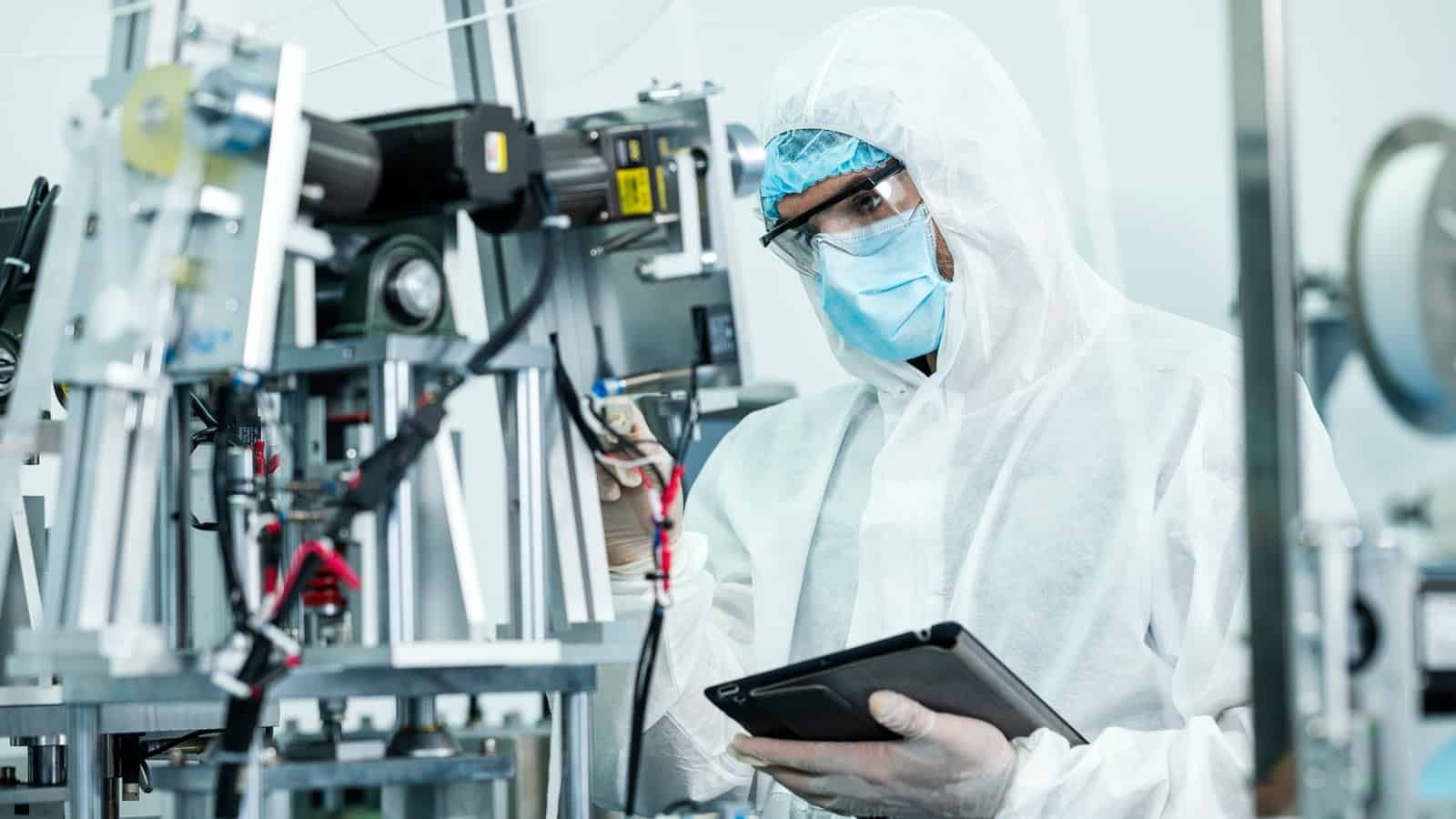
The human side of digital transformation was on full display at a recent virtual plant tour of BASF Chemical Intermediates Geismar, Louisiana, facility. Hosted by the NAM’s Manufacturing Leadership Council, the tour gave participants an inside look at how the company is using Voovio’s enhanced-reality technology to transform employee training.
Who they are: BASF Chemical Intermediates, a division of German multinational chemical manufacturer BASF, makes approximately 600 distinct products sold worldwide to the chemical, plastics, agricultural and consumer goods industries, among others.
What is Voovio? The company has partnered with simulation-software maker Voovio to design a customized training solution for its employees: a virtually accessible digital replica of the BASF plant.
- Using a computer or other digital device, employees can select plant components such as valves, pumps and control panels to get a detailed view of each. These components respond and perform virtually the same way they would in real life.
- Using the software, trainees can click on any piece of equipment in any workflow to see how it fits into each process.
Why use it? BASF wanted to make worker training faster, more interactive and more self-directed so employees could learn new skills and review existing ones more quickly and easily.
Scalable training model: The tailorable Voovio software offers different training-module levels based on each worker’s experience level and skills.
- Training modules include an equipment replica, tasks to be performed and an action checklist for completing a series of tasks.
- Employees get feedback from the software as they perform each virtual procedure, letting them know whether they’ve performed a task correctly.
Real-world application: Voovio also lets companies take the training into the production facility. Using an approved digital device, employees can perform test runs at any time to ensure they’re prepared to complete a job on the ground.
The verdict: BASF has already begun to reap the benefits of the software. Since implementing Voovio, it has seen a marked increase in both worker competency and productivity.
Sign up for a virtual plant tour: Don’t miss the MLC’s upcoming tour of Johnson & Johnson’s facilities on Wednesday, Dec. 1, from 11:00 a.m. to 1:00 p.m. EST. You will see how Johnson & Johnson uses mobility tools, advanced robotics and material handling, as well as adaptive process controls to drive improvements. After the tour, stay for the panel discussion on how to scale advanced manufacturing technologies to ensure a sustainable, reliable and adaptable product supply chain. Sign up today!
How Cloud Computing Could Help Chip Manufacturers

One small component is creating big delays in global supply chains: the ubiquitous semiconductor or chip. These components are not only essential to our phones, laptops and other electronics, but to the production process in just about every sector of the manufacturing industry. So, what would help us produce more of these desperately needed parts? According to Birlasoft Vice President and Global Business Head of Communications, Media & Technology Nitesh Mirchandani, the answer is cloud computing.
Why the shortage? As COVID-19 unfolded, millions of consumers purchased new laptops, smartphones, game consoles and other devices as they spent more time at home. This shortfall was compounded by the existing high demand for chips brought on by the growth in smart products—everything from thermostats and appliances to robot vacuum cleaners and GPS-enabled dog tags. COVID-19 also caused a wave of semiconductor factory closures that also exacerbated the problem. The result? A shortage that industry experts say could last through 2022.
Why the cloud? Cloud computing is the on-demand delivery of resources like data storage, software, networking and other services via the internet. Users either purchase a set subscription or pay by their level of usage—both cheaper and more flexible options than maintaining an on-site IT team for all needs. Cloud computing has several advantages for semiconductor manufacturers, according to Mirchandani:
- It speeds up time to market through swifter design and development. Because they can be accessed anywhere, cloud services enable teams to connect and collaborate more easily. Development cycles become quicker as teams connect better internally and with other parts of the business, including partners and suppliers.
- It enables data-driven business decisions. Thanks to the faster processing and analysis of cloud computing, manufacturers can get instant information on things like factory performance, supply disruptions or customer demand. Likewise, workers can be alerted to a machine that needs maintenance or to potential defects in materials or products.
- It provides service continuity. Internal IT teams often have limited resources. Cloud infrastructure is managed by specialists who can ensure uninterrupted service, so in-house IT teams don’t need to continuously maintain software through updates and patches.
Why it matters: Semiconductor shortages threaten to drag down the economy just as recovery is getting underway. Businesses rely on chip-enabled technologies for creating products, managing operations and maintaining the flow of goods and services. Consumers rely on them for smarter, safer homes and connections to work or school. Unless chip manufacturers can shore up production to meet demand, the ripple effect will create added distress for many sectors of the economy.
A Manufacturer Goes Lean and Wins Big
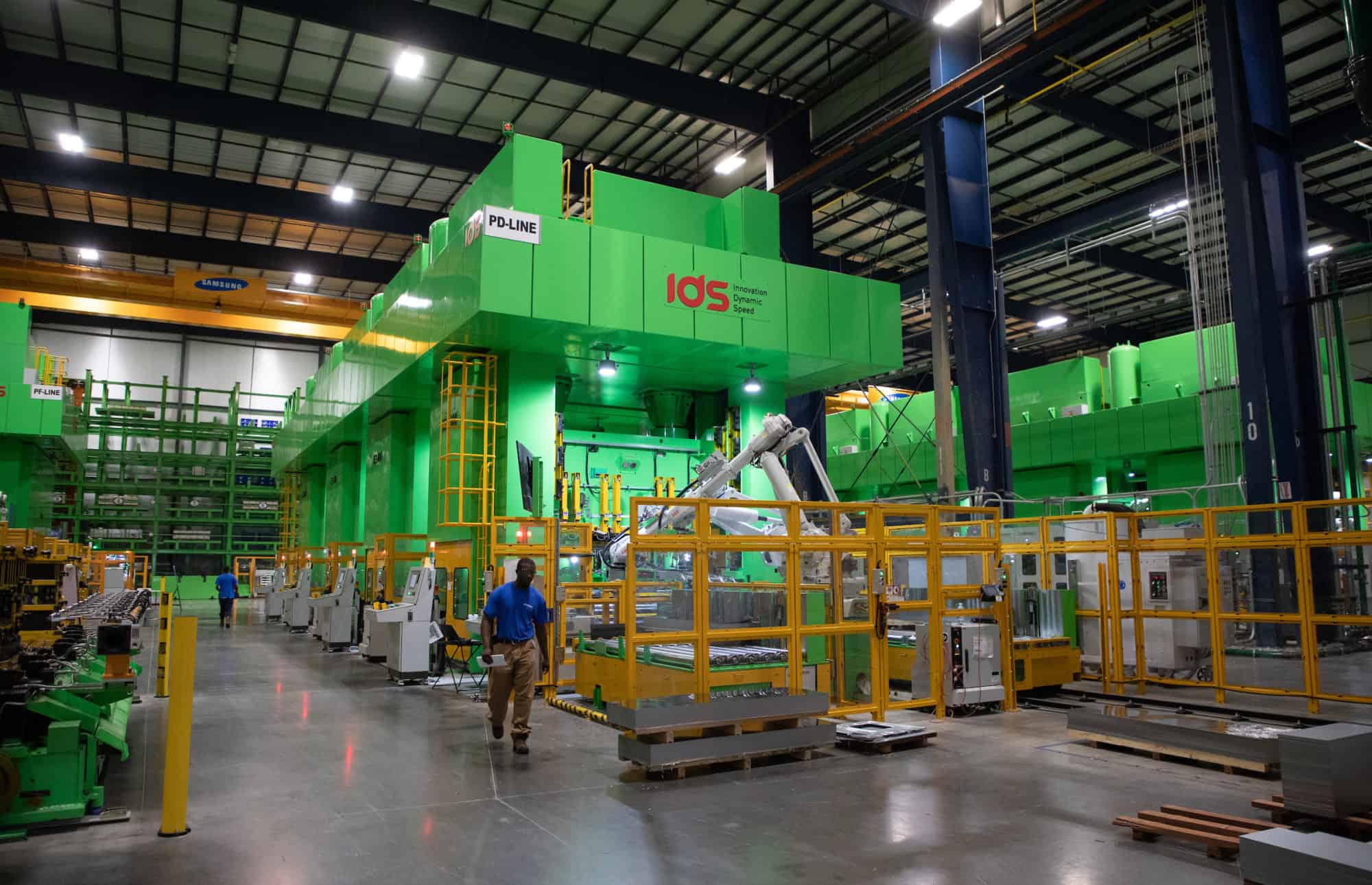
Consumer goods manufacturer Church & Dwight found that it needed to boost performance to meet customer demand. To meet this goal, it embarked on an ambitious Lean initiative at all of its 13 production facilities.
“We look at all challenges through the lens of Lean manufacturing—it’s the only way that we can operate,” said Bruno Silva, vice president of manufacturing operations.
What’s Lean? Researchers James Womack and Daniel Jones first defined the concept of Lean manufacturing as “a way to do more with less … while coming closer to providing customers exactly what they want.” Many manufacturers see mastering Lean as an essential springboard to operational initiatives like digital manufacturing and other advanced production practices.
Setting the stage: In developing its Lean program, Church & Dwight first held a weeklong leadership summit to decide on standards and expectations. The company’s leaders came up with a Lean assessment system with 16 standards and a definition for achievement at the gold, silver and bronze levels. But the essential part was ensuring frontline employees were driving improvement from the bottom up—not the other way around.
- “This is not corporate pushing it down,” said Felipe Vilhena, director of Lean manufacturing – global operations. “We help workers overcome challenges and give them the right tools to do that. We created a mindset and expectation that improvements are part of the work.”
Putting it into practice: Initially, each worker was asked to list five potential improvements at his or her site, and then go out and make them. The company provided training and support to help with these fixes, while managers kept employees fully informed of their progress according to key indicators.
- Workers formed self-directed teams and continued to seek out improvements, which they began making more and more frequently. Thanks to the trust and autonomy that employees were given, engagement and retention measurably increased at the same time.
Receiving recognition: The company’s achievements have received recognition from its peers in the industry. One of its top-performing facilities in Green River, Wyoming, earned the company a 2021 Manufacturing Leadership Award in the Operational Excellence category from the NAM’s Manufacturing Leadership Council.
The last word: “It was important to create the right expectation and mindset,” Vilhena said. “From big to small improvements, we are seeing them happen every day.”
Nexteer Displays Advanced Manufacturing in Action
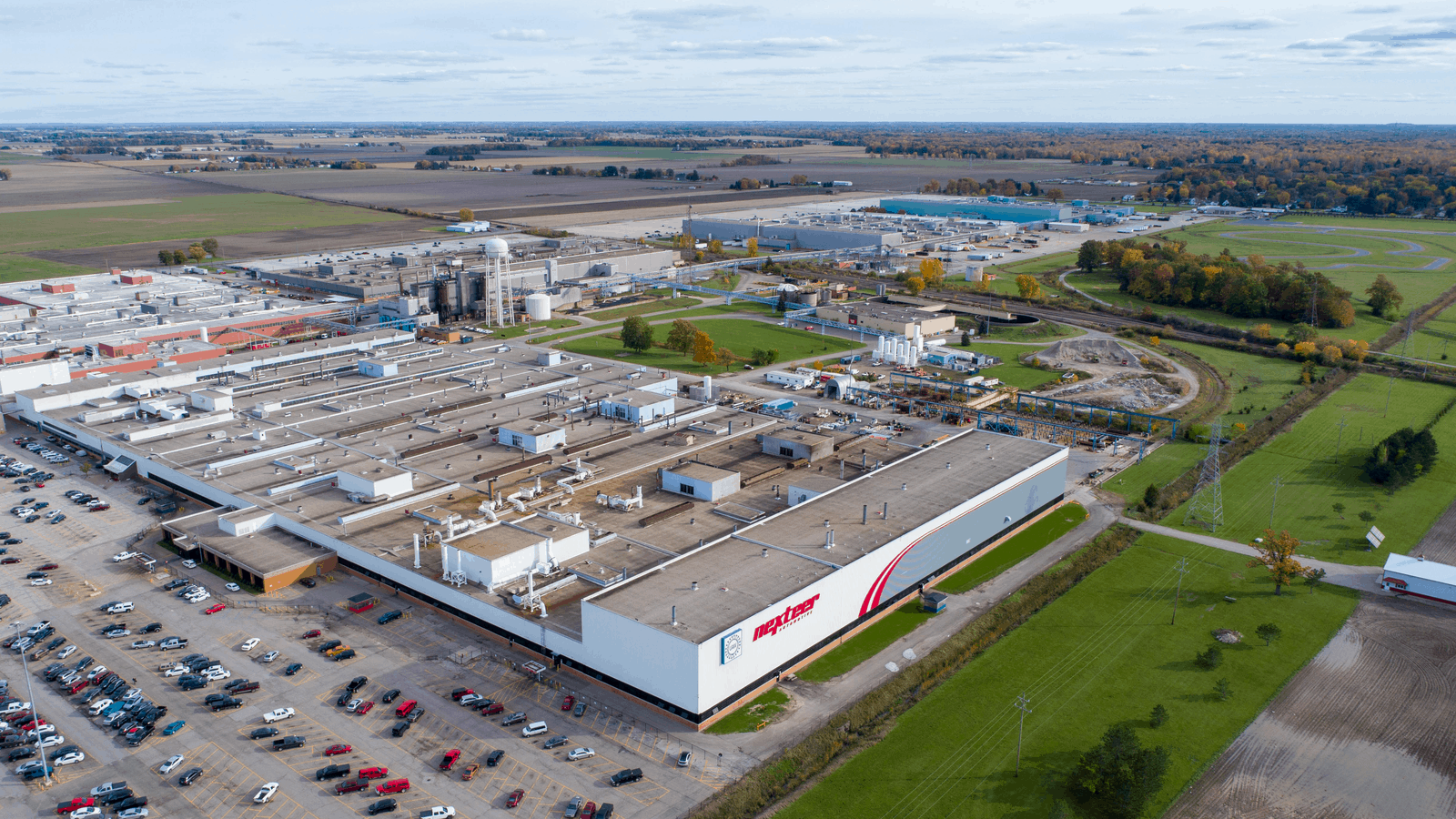
Would you like to see the latest advanced technologies exhibited and explained for your benefit, all without leaving your office? The NAM’s Manufacturing Leadership Council’s virtual plant tours provide just such an opportunity, taking you inside cutting-edge processes and complex systems at manufacturing facilities across the country. Most recently, the MLC dropped in on Nexteer Automotive, where tour participants got to see its innovative Digital Trace Manufacturing™ (DTM) System in action.
Who they are: Nexteer specializes in electric and hydraulic power steering systems, steering columns and driveline systems, as well as advanced driver assistance systems and automated driving-enabling technologies. The company serves more than 60 customers around the world, including BMW, Ford, GM, Toyota and Volkswagen.
What is DTM? Nexteer’s DTM System connects and standardizes the company’s entire operations—including thousands of data-production components in 27 manufacturing plants around the world. To showcase the system’s capabilities, Nexteer took tour participants inside its Saginaw, Michigan, site, which includes six manufacturing plants comprising 3.1 million square feet of manufacturing floor space.
Tour highlights: Participants learned about the complexities of running a large-scale automotive component manufacturing plant, as well as how Nexteer uses the DTM System to maximize efficiency.
- Nexteer team members explained how they design and program machines for data processing, showing how they determine where data will be sent and how they use barcode scanners and other methods to track components’ serial numbers.
- Participants also got a virtual walk-through of Nexteer’s tracking system, which follows material from receiving and shipping through the production line with single-box precision. They also learned how Nexteer uses its Center of Analysis to correct any issues that arise.
Why it matters: It’s one thing to have a large system collecting data, and it’s another to be able to use that data effectively. The Nexteer virtual plant tour provided participants with practical takeaways, which will help them adopt similar innovations at their own facilities—for the benefit of employees, customers and shareholders alike.
Coming soon: Don’t miss the MLC’s upcoming tour of Johnson & Johnson’s facility on Wednesday, Dec. 1, from 11:00 a.m. to 1:00 p.m. EST. You will see how Johnson & Johnson uses mobility tools, advanced robotics and material handling and adaptive process controls to improve its operations. After the tour, stay for the panel discussion on how to scale advanced manufacturing technologies to create a sustainable, reliable and adaptable product supply. Sign up here.
